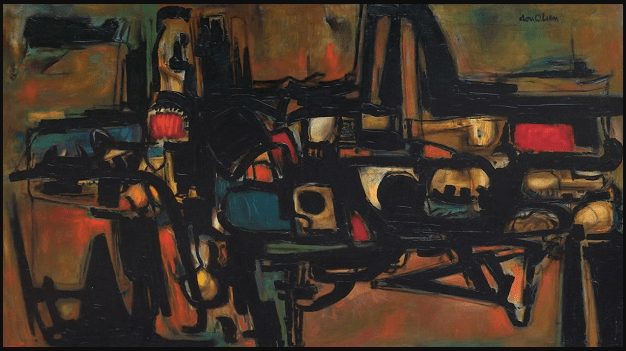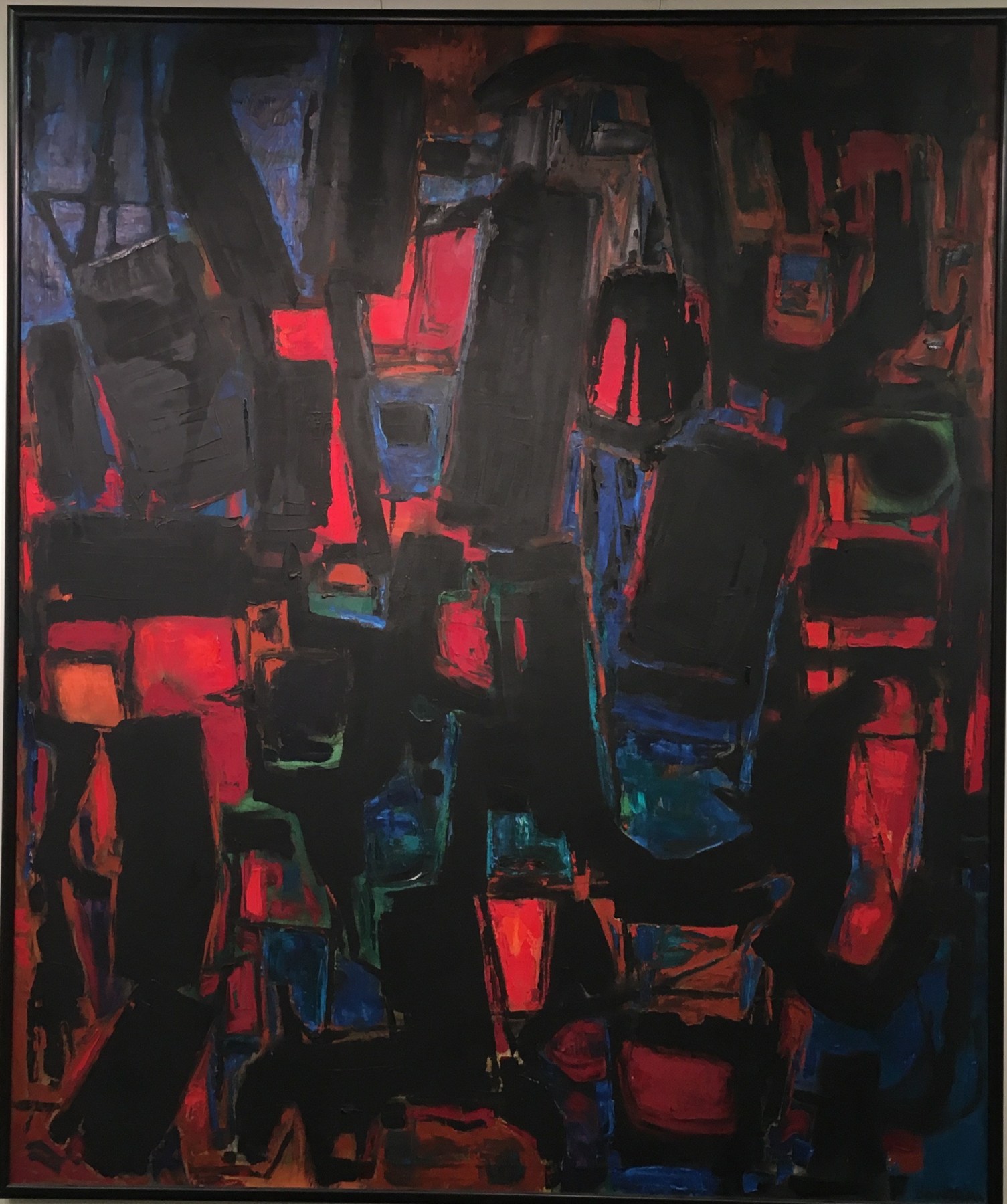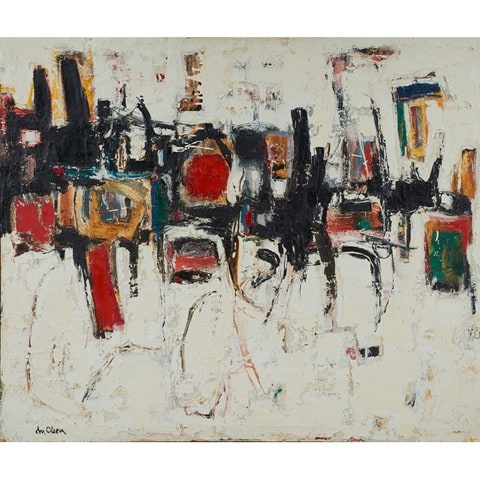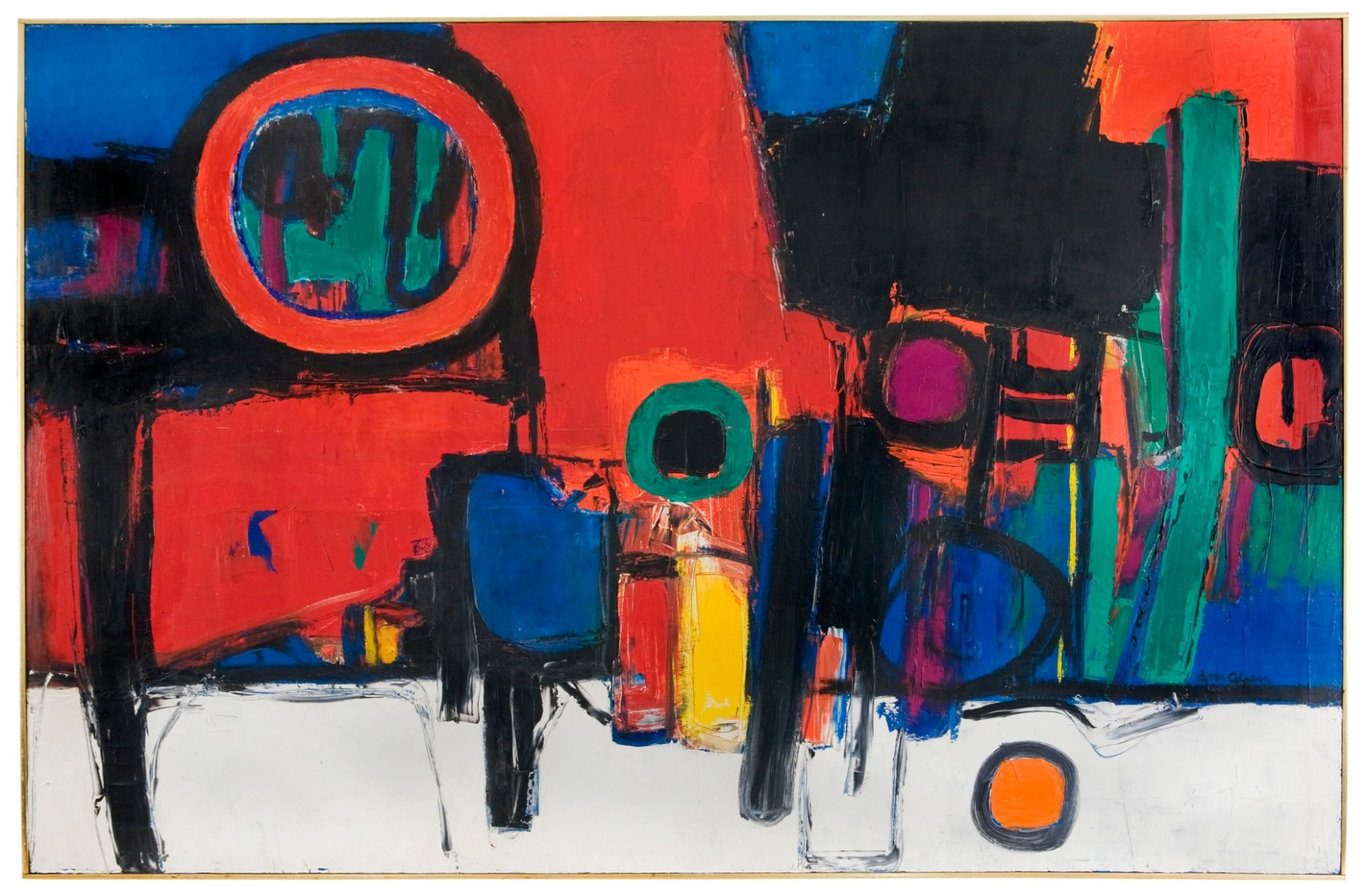American, 1910 -1983
Don Penrod Olsen was born in 1910 and died in Utah 1983. He made Utah his home. Don was one of the most significant artists of Utah to emerge with more of a direct line with radical modernism. He was an art teacher at Jordan High School and the Art Barn, which later became the Salt Lake Art Center. Olsen wanted to meld the Utah School with national directions of abstract expressionism in art.
He bridged the early and later Utah generations of modernism most effectively. Don worked through many of the abstract languages of art more brutally, from “BRUSHED-ACTION PAINTING” (abstract expressionism) to “HARD- EDGE” (minimalism). He fell in between the lines of Gothic abstract painting. He understood the intent of abstract expression better than anyother Utahn.
Olsen’s style became freer after he studied the summer of 1954 at Hans Hofmanns School of Art in Provincetown, Massachusetts. In 1955, he exhibited at the Salt Lake Art Center with a one-man show developed from his recent study with Hofmann. For a decade more, her would be known solely for his “large thickly painted-with-muscle brushwork”, or “brush-action-painting”.
With his painting, Don reached an immediacy, involvement, and energy level seldom attained by his Utah peers. It is an explosively vital work which attacks the viewer’s sensitivities with internal expressiveness. His work protests the niceties of his colleagues and escapes to art of a different nature at its most ferocious. In Olsens words: “Painting is not and illusion. A painting can only be itself; it does not simulate, borrow from, or pretend to be anything outside itself. It is a real thing and its reality lies in being itself. A painting reveals the internal expression of the artist and has nothing to do with observation of visual facts”.
Following his marriage to Betty in 1962, Don did some of his most outburst, feeling work. A series of canvases dominated by white as positive shape, negative passage or ground, dripped line or textural splatter. His colors are more often used unmixed, directly from the tube, with reds still prominent and blues, greens and yellow playing a secondary role.
In Oct of 1966, after a dozen years of “push and pull” of “force and counterforce”, “hazard and tension” of abstract expression, Olsen the “Great Introducer” surprised Utah with a new direction in his art when he exhibited fifteen “hard-edge” works at the Phillips Gallery in Salt Lake City. He replaced his method of “action-painting” with the architectural precision of masking tape, spraypaint and flat acrylic. If his work in the early sixties projected raw power, then cool intellectualism might describe his later work.





